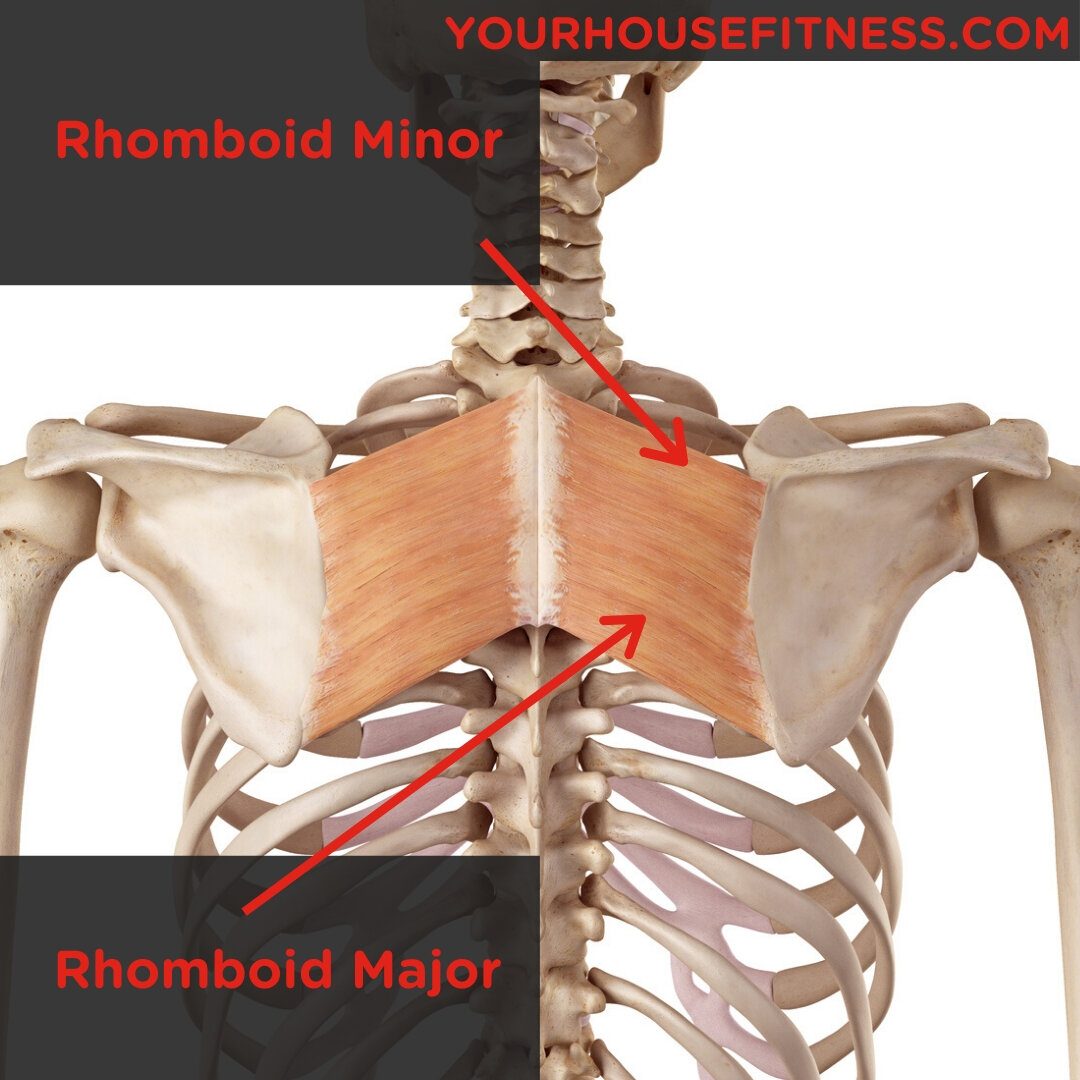Muscle Breakdown: Rhomboid Major and Minor
Table of Contents
What Are the Rhomboid Major and Minor
The Rhomboid Major and Rhomboid Minor are two separate muscles that work together to attach the scapula to the spine. The Rhomboid Minor is located above the Rhomboid Major and performs the same function and action within the body. The Rhomboids play a key role in the stability of the scapula and are important for any upper limb movement.
Rhomboid Major and Rhomboid Minor Muscle
The Rhomboid Major and Rhomboid Minor are classified as skeletal muscles and are located underneath the trapezius in the upper back. The Rhomboid Major is thinner and flatter and twice as wide as the Rhomboid Minor, however both muscles resemble the shape of a Rhomboid.
Rhomboid Major and Rhomboid Minor Function
The Rhomboid Major and Rhomboid Minor produce scapular retraction, elevation of the scapula and inferior rotation of the scapula.
Rhomboid Major and Rhomboid Minor Action
The Rhomboid Major and Rhomboid Minor work together to keep the scapula against the thoracic wall and to prevent scapular winging.
Rhomboid Major Origin and Insertion
Rhomboid Major Origin
The Rhomboid Major originates from the spinous processes of the vertebrae. Specifically, T2-T5.
Rhomboid Major Insertion
The Rhomboid Major inserts into the medial border of the Scapula. Specifically, from the scapular spine to the inferior angle of the scapula.
Rhomboid Minor Origin and Insertion
Rhomboid Minor Origin
The Rhomboid Minor originates from the Nuchal Ligament and the Spinous Processes of C7 to T1.
Rhomboid Minor Insertion
The Rhomboid Minor Inserts into the spine of the scapula.
Rhomboid Major and Rhomboid Minor Innervation
The Rhomboid Major and Rhomboid Minor are innervated by the Dorsal Scapular Nerve.
Rhomboid Major and Rhomboid Minor Pain
Pain in the Rhomboid Major and Rhomboid Minor can arise from multiple sources including:
Muscle overuse/overload
Repetitive movement
Poor posture
Remaining in the same position for a period of time
Dehydration
These risks can cause pain, injury, and muscle sprains and strains. Symptoms of muscle sprains include swelling, bruising, and pain upon movement.
The best way to treat this pain is to rest, and ice the Rhomboids. Stretching can also help to relieve discomfort, but only perform stretches if they are not painful. Make an appointment with your doctor if pain persists or worsens.
Rhomboid Major and Rhomboid Minor Stretch
Upper Back and Neck Stretch
While standing, interlace your fingers together and raise your arms in front of you so that your hands are chin level and your palms are facing outwards. Push your palms away from the body and bend your neck towards your chest. You should feel your shoulder blades moving away from each other. Hold this position for 20-30 seconds and repeat for 2-3 sets.
Neck Stretch and Rotations
While standing or sitting, slowly bend tilt your head to one side so your ear touches your shoulder. Hold this position for 20-30 seconds and repeat for 2-3 sets.
You can also perform neck rotations. Begin looking forwards and turn your head to one side keeping your chin level. Hold for 20-30 seconds and repeat for 2-3 sets.
Rhomboid Stretch
Begin sitting on the edge of a chair with your legs at 90-degree angles. Bend forward and with your left hand, grab your right ankle. With your right hand gently push your elbow towards your body. Hold this position for 20-30 seconds and repeat for 2-3 sets.
Rhomboid Major and Rhomboid Minor Exercises
Prone Lateral Raise
Lie face down with a dumbbell in either hand. Your arms should be extended so your body forms a letter ‘T’. Elevate your arms until they’ve reached shoulder height, keeping your chest in contact with the floor. Be sure to squeeze your shoulder blades together and hold this position for 1 second. Lower your arms back to the starting position. Repeat this movement for 2 sets of 10 reps.
Prone Front Raise
Lie face down with your arms extended beside your head. Your body should form the letter ‘I’. Keeping your forehead in contact with the floor, point your thumbs up towards the sky and elevate your arms up straight. Squeeze your shoulder blades together and hold the elevate position for one second before returning to the starting position. Repeat this movement for 2 sets of 10 reps. To progress this exercise, use dumbbells.
Incline Pull-Ups
Begin lying underneath a racked bar. Extend your arms to grab onto the bar. Keeping your heels on the ground, pull your body up towards the bar. Squeeze your shoulder blades together as you do this and try to keep your back straight. Perform this movement for 2 sets of 10 reps.



